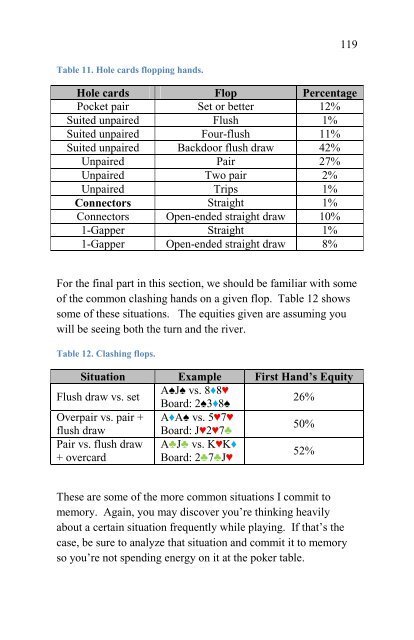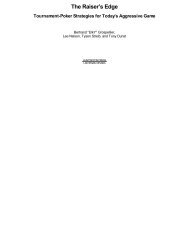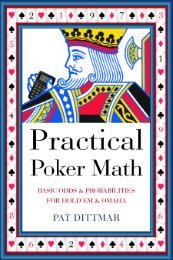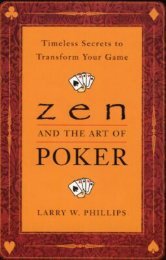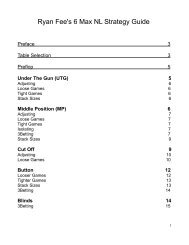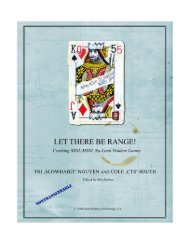You also want an ePaper? Increase the reach of your titles
YUMPU automatically turns print PDFs into web optimized ePapers that Google loves.
Table 11. Hole cards flopping hands.<br />
119<br />
Hole cards Flop Percentage<br />
Pocket pair Set or better 12%<br />
Suited unpaired Flush 1%<br />
Suited unpaired Four-flush 11%<br />
Suited unpaired Backdoor flush draw 42%<br />
Unpaired Pair 27%<br />
Unpaired Two pair 2%<br />
Unpaired Trips 1%<br />
Connectors Straight 1%<br />
Connectors Open-ended straight draw 10%<br />
1-Gapper Straight 1%<br />
1-Gapper Open-ended straight draw 8%<br />
For the final part in this section, we should be familiar with some<br />
of the common clashing hands on a given flop. Table 12 shows<br />
some of these situations. The equities given are assuming you<br />
will be seeing both the turn and the river.<br />
Table 12. Clashing flops.<br />
Situation Example First Hand’s Equity<br />
Flush draw vs. set<br />
A♠J♠ vs. 8♦8♥<br />
Board: 2♠3♦8♠<br />
26%<br />
Overpair vs. pair +<br />
flush draw<br />
A♦A♠ vs. 5♥7♥<br />
Board: J♥2♥7♣<br />
50%<br />
Pair vs. flush draw<br />
+ overcard<br />
A♣J♣ vs. K♥K♦<br />
Board: 2♣7♣J♥<br />
52%<br />
These are some of the more common situations I commit to<br />
memory. Again, you may discover you’re thinking heavily<br />
about a certain situation frequently while playing. If that’s the<br />
case, be sure to analyze that situation and commit it to memory<br />
so you’re not spending energy on it at the poker table.


